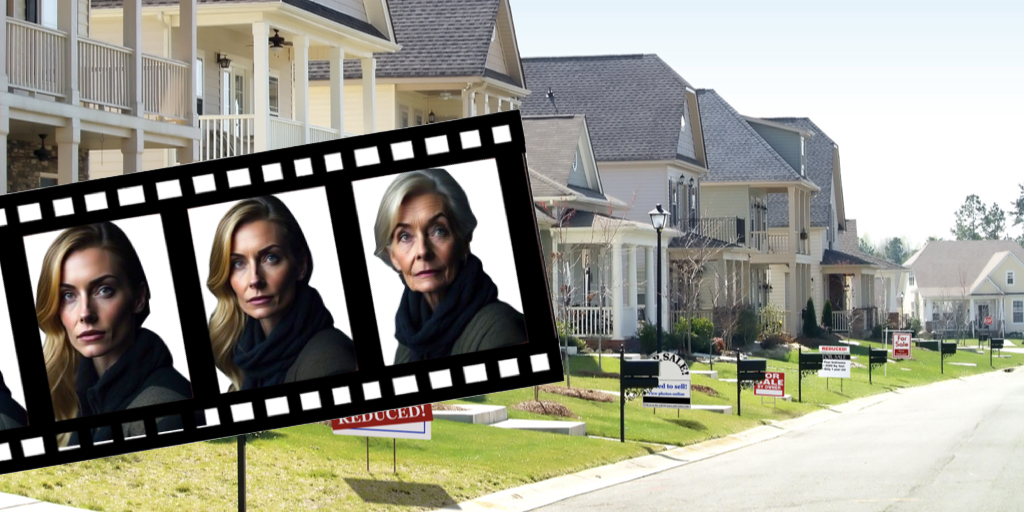[ad#Take Charge America]
Brrr. It’s winter, and unless you live in Florida or southern California, that means cold. And wet. For many seniors the thought of making their home winter-ready is overwhelming: either beyond their physical capabilities, or beyond their finances, or both.
 Yet a winter-worthy home is not only essential for a senior’s health and well-being; one of the underwriting requirements for a reverse mortgage is a permanent source of heating. A wood stove doesn’t qualify, nor does a portable propane or electric space heater. A key question for a loan officer to ask is, “How are your energy costs?” If a senior demurs, there’s good news: winterization assistance for seniors can often be subsidized through a weatherization grant.
Yet a winter-worthy home is not only essential for a senior’s health and well-being; one of the underwriting requirements for a reverse mortgage is a permanent source of heating. A wood stove doesn’t qualify, nor does a portable propane or electric space heater. A key question for a loan officer to ask is, “How are your energy costs?” If a senior demurs, there’s good news: winterization assistance for seniors can often be subsidized through a weatherization grant.
People aged 62 and older who own their own home and live in a rural area of 10,000 or fewer people can qualify for a rural development home improvement grant for winterizing, repairing their heating system, and making structural repairs.
A senior may also qualify for the Weatherization Assistance Program if their income falls below poverty level, the definition of which varies by state. This page will help a senior determine whether they are eligible for energy assistance, and how to apply.
As global life expectancy spirals upward, we’re witnessing a concomitant boom in the elderly population, which will more than double between now and 2030 (from 35 million people in 2000 to 72 million in 2030). Clearly, it makes sense for seniors, and those who will become seniors, to preserve their health and reduce medical costs.
Ten tips to help you help seniors winterize their homes (you may wish to print this and share it with senior prospects and clients):
- Test the heating system. This is so basic that people often fail to do it! Take a look at the condition of the filters and make sure the heating system is working properly. Clean the furnace to help prevent fires and lower energy costs. Close heating vents in any rooms that are not used.
- Ensure the home is adequately insulated. Consider adding storm windows, as well as extra insulation in the attic to prevent hot air from escaping. Install weather strips around doors and windows. Caulk major holes or cracks.
- Check carbon monoxide and smoke detectors. Be sure all units have functioning batteries.
- Install a programmable thermostat. Set it to the senior’s comfort level, and, if the senior is forgetful, lock the system to prevent accidental temperature extremes that could jeopardize their health.
- Inspect the fireplace and ceiling fans.For the fireplace, make sure there is no buildup in a chimney flue, and remove any ashes and other debris that can become a fire hazard. If a senior is not safe using a fireplace, have it blocked off for winter. For ceiling fans, reverse the direction of the blades so the fan pushes warm air downward.
- Check outdoor faucets. A leaky spigot can create icy surfaces in the cold, increasing slip and fall danger.
- Repair uneven sidewalks and walkways. Uneven pavement poses a risk in normal weather conditions, which is amplified in the presence of ice.
- Plan ahead for de-icing and snow removal. Icy sidewalks and driveways pose one of the greatest hazards to seniors living at home. Create a plan for keeping the sidewalk de-iced: purchase a supply of melting salt and post the phone numbers of winter snow removal specialists on the refrigerator door, where they’re easy to find.
- Prepare for contingencies. Power often goes out during storms. This is when portable propane space heaters can be invaluable. Remember to keep flammable objects such as curtains and bedding far from portable heaters.
- Bundle up! Have extra wool blankets and warm bedding available, along with thick socks, long johns and bathrobes. Place outdoor gear (scarves, gloves, ear muffs, hats) near the front door to make it easy to find when heading outside.








6 Comments
Haven’t you heard? We don’t have time for the old, the sick, the weak or the poor any more! We prefer to only work with the upper middle class, the more affluent types who are so much healthier and far better looking. If our new customers have home winterization concerns they just call someone to get it done because they’re too busy meeting with their “wealth managers”.
hecmvet,
You are far too pessimistic for even a cynic like me. Even “…the upper middle class, the more affluent types who are so much healthier and far better looking” need to winterize their homes.
Aligning with contractors and handymen who do this kind of work for seniors seems like one way to boost originations during the months just before the severe winter months.
I doubt if even you have totally given up on the use of HECMs by the less than “mass affluent” because there is still a substantial market there who can use HECMs. Who most of us have given up on are those who have mortgage balances higher than the 15% reduced prior Standard principal limits will allow us to help. While that knocks out about 20% of our old market base, still about 80% of our former market is left but our premium fees based on UPBs at funding have dropped significantly due to the new 60% first year disbursement limitation and the reduced PLFs.
So if someone who adopted the name, “The_Cynic,” can adapt and move forward, why can’t someone who calls himself the “hecmvet” do so as well? Or perhaps it is time for someone who is more deserving of that name to start calling herself/himself the “hecmvet?” So far you have proved yourself a “hecmvet” but it seems you no longer accept the responsibilities that name bears; please prove me wrong.
I hope your kidding Because if your in this type of situation or know some one who is god bless you
Hi hecmvet ~
I invite you to take a look at Mike Johnson’s comment on Shannon’s Against the Wind video. A shift in perspective can help us find those proverbial silver linings.
Blessings ~
Amara,
There is absolutely nothing wrong with a senior using HECM proceeds to winterize their homes even through initial HECM funding. Also it would be a good idea for HECM originators to seek out contractors and handymen who specialize in this kind of work to help seniors afford this work. (Two practical applications of your well written article.)
Even those of us who live near the beach in sunny
California can find practical uses for some of the suggestions you made. Who knows about our friends in Florida? Although many Florida fruit growers have adopted the use of the smudge pots our Southern California farmers used to protect orange groves (which was much of California before the 1950s) from frost.
Hi The Cynic ~
Once again, some excellent additions. I encourage you to consider emailing either Shannon or me with article ideas and applications so we can include such information in the posts, rather than as comments after publication.
Either way, you make a very good point about LOs continuing to expand their network: developing business relationships with contractors, handypeople and other resources seniors need to remain healthfully and safely at home is a smart move, and another creative way to grow your HECM business.